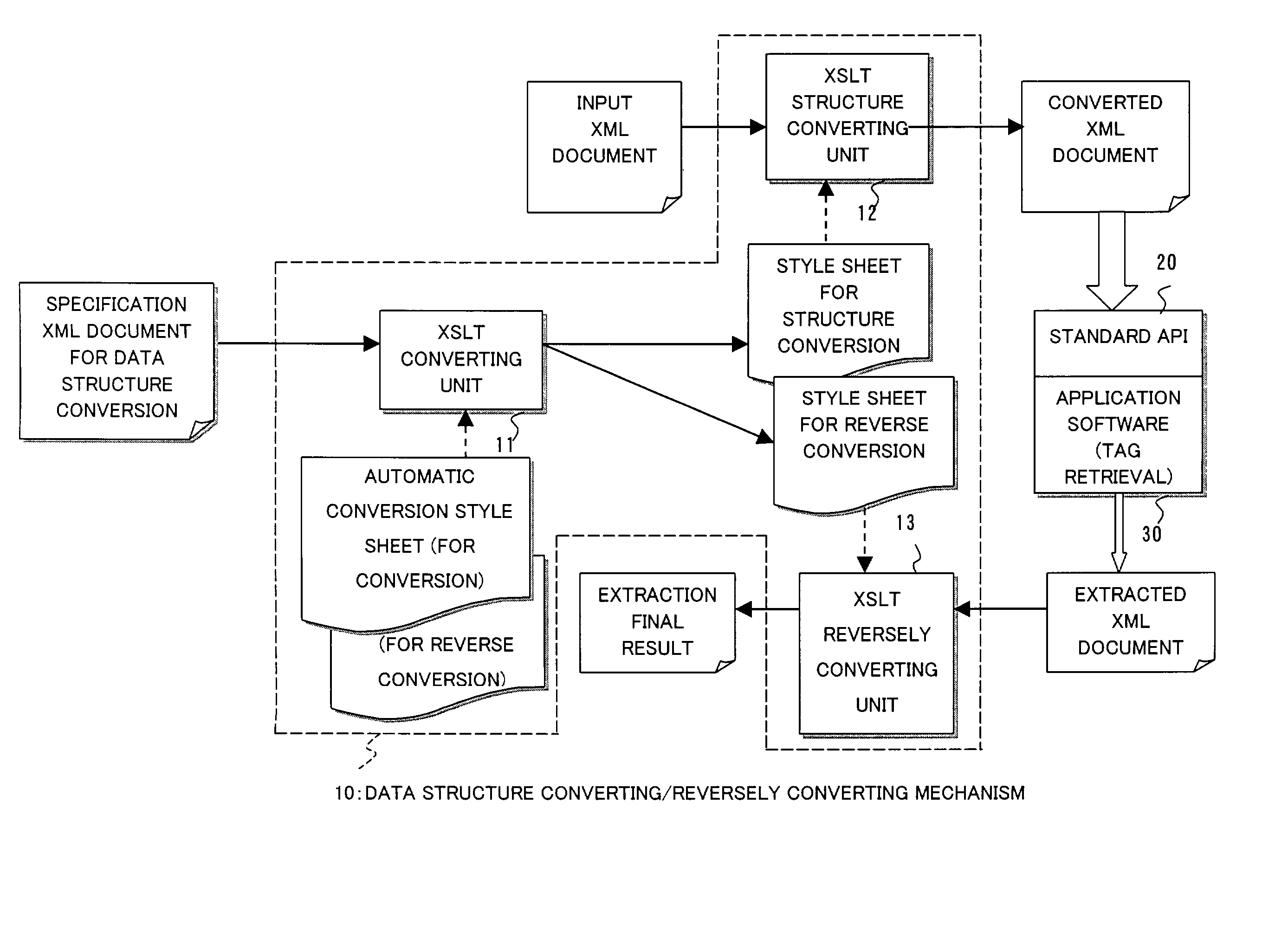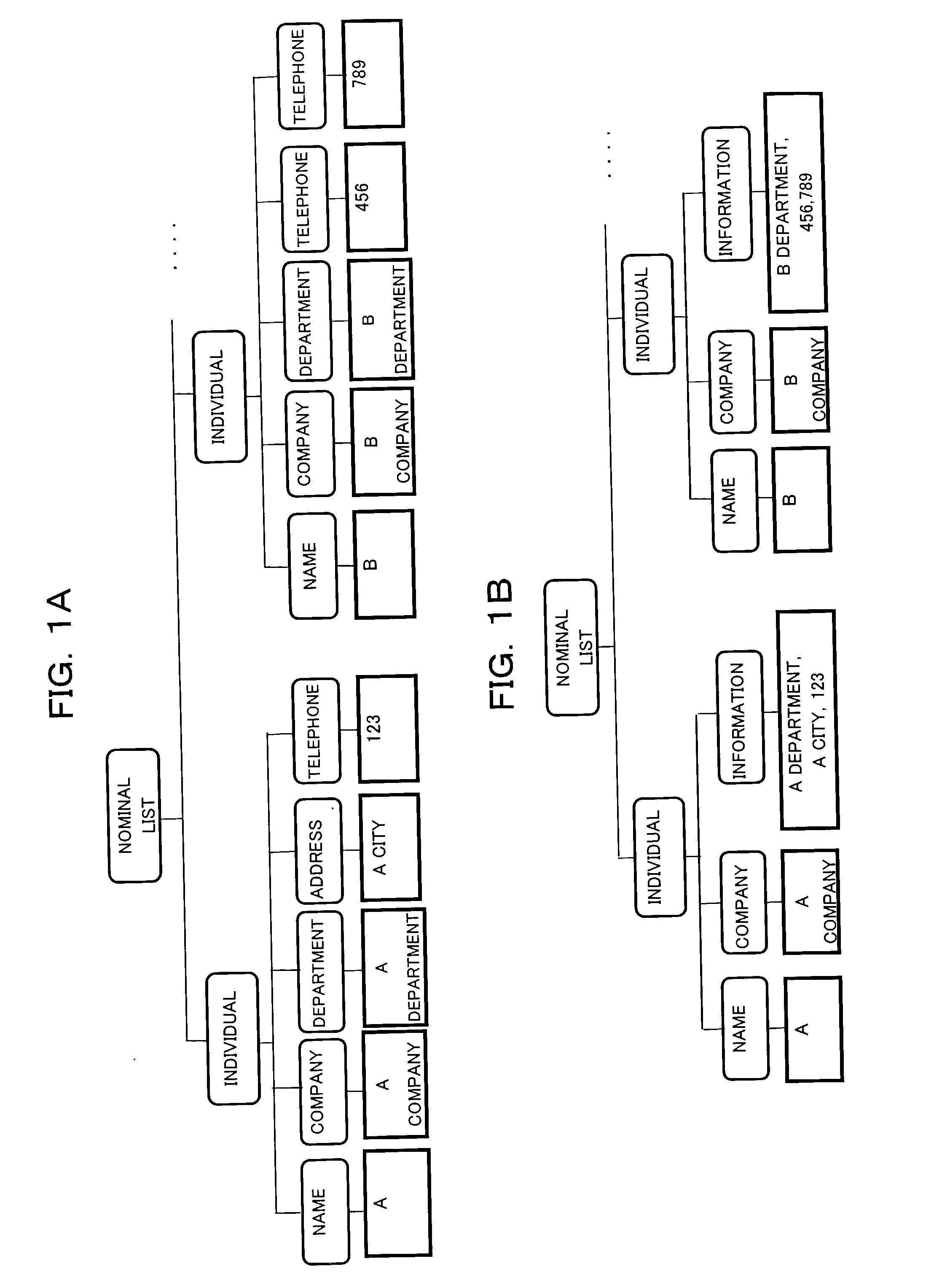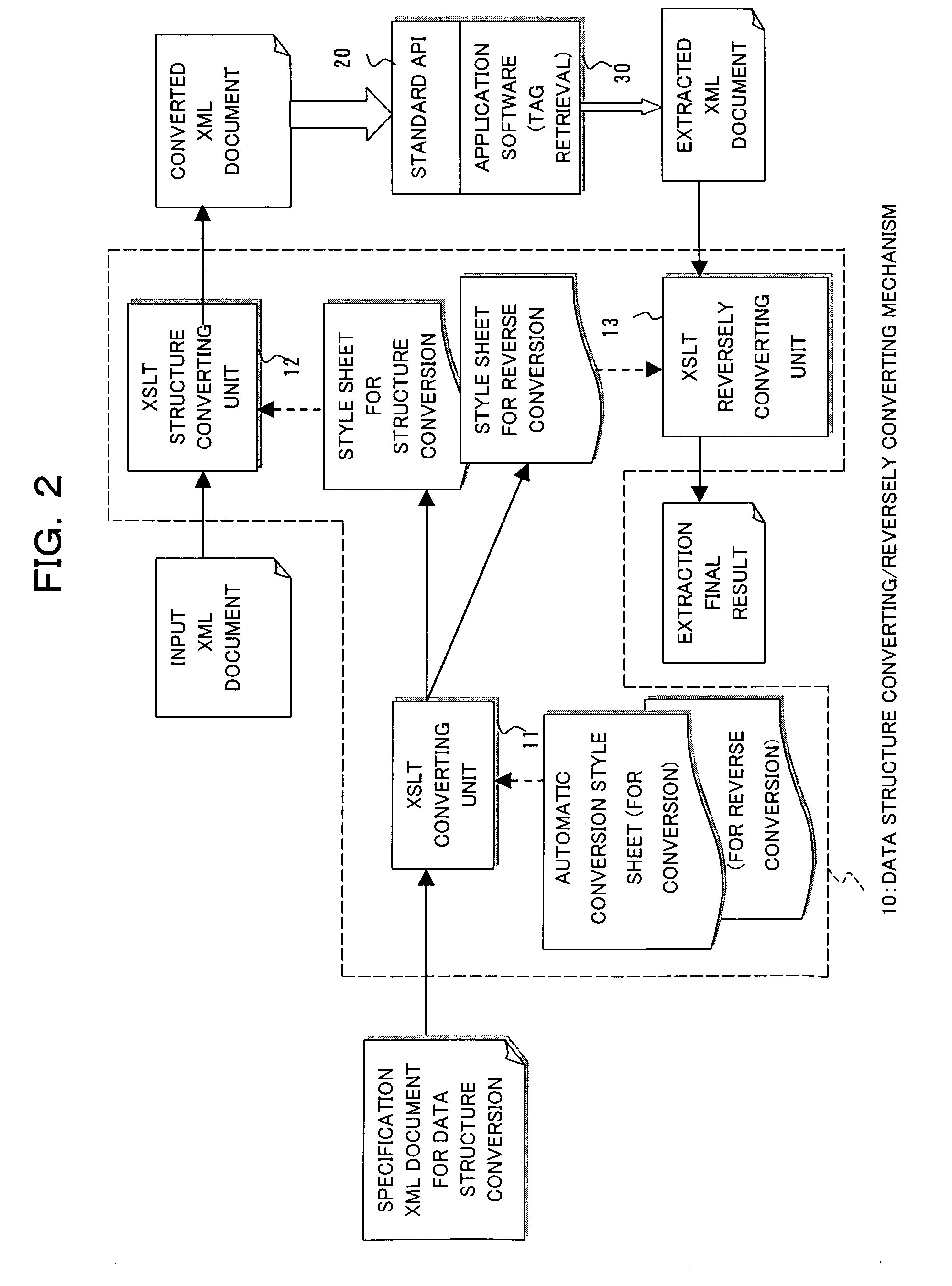Structured document converting method and data converting method
a document and data technology, applied in the field of structured document converting method and data converting method, can solve the problems of dom having a generally low processing speed, html cannot cope with a requirement, and the effect of known technique 3 cannot be achieved
- Summary
- Abstract
- Description
- Claims
- Application Information
AI Technical Summary
Problems solved by technology
Method used
Image
Examples
first embodiment
[0110] In a first embodiment, description will be made first of a method of converting an XML document in which elements in each record are in one hierarchical layer, secondary of a method of converting an XML document including a record in which elements are in not less than two hierarchical layers or a record in which an element having an attribute, for the sake of simple explanation.
[0111] [1-1] Principle of Structured Document Converting Method According to First Embodiment
[0112] Now, the principle of a structured document converting method according to the first embodiment of this invention will be described with reference to FIGS. 1A, 1B and 3A.
[0113] An XML document to be converted shown in FIG. 3A has two records (of tag name "individual"). One record has elements of respective tag names "name", "company", "department", "address" and "telephone". The other record has elements of tag names "name", "company" and "department", along with two elements of one tag name "telephone"...
second embodiment
[0262] [2] Description of Second Embodiment
[0263] [2-1] Principle of Structured Document Converting Method According to Second Embodiment
[0264] Next, description will be made of the principle of a structured document converting method according to a second embodiment of this invention with reference to FIGS. 1A, 3A and 22.
[0265] In the XML document described above with reference to FIGS. 1A and 3A, elements of tag names "name" and "company" are key elements, whereas elements of tag names "department", "address" and "telephone" are nonkey elements. FIG. 22 shows a memory expanded form of a converted XML document obtained by applying a structured document converting method according to the second embodiment to the XML document in FIGS. 1A and 3A. Incidentally, the expanded form shown here is an expanded form on a memory used when the converted XML document is operated by the application software through standard API (DOM).
[0266] In the XML document shown in FIG. 22, a new element havi...
third embodiment
[0345] [3] Description of Third Embodiment
[0346] [3-1] Principle of Structured Document Converting Method According to Third Embodiment
[0347] Next description will be made of the principle of a structured document converting method according to a third embodiment of this invention with reference to FIGS. 1A, 3A and 40.
[0348] In the XML document described above with reference to FIGS. 1A and 3A, elements of tag names "name" and "company" are assigned as key elements, whereas elements of tag names "department", "address" and "telephone" are assigned as nonkey elements. FIG. 40 shows a memory expansion form of a converted XML document obtained by applying a structured document converting method according to the third embodiment to the above XML document. Incidentally, the expansion form shown here is an expansion form on a memory at the time that the application software operates a converted XML document through the standard API (DOM).
[0349] In the XML document shown in FIG. 40, a new ...
PUM
 Login to View More
Login to View More Abstract
Description
Claims
Application Information
 Login to View More
Login to View More - R&D
- Intellectual Property
- Life Sciences
- Materials
- Tech Scout
- Unparalleled Data Quality
- Higher Quality Content
- 60% Fewer Hallucinations
Browse by: Latest US Patents, China's latest patents, Technical Efficacy Thesaurus, Application Domain, Technology Topic, Popular Technical Reports.
© 2025 PatSnap. All rights reserved.Legal|Privacy policy|Modern Slavery Act Transparency Statement|Sitemap|About US| Contact US: help@patsnap.com



